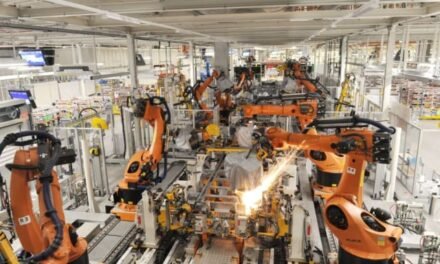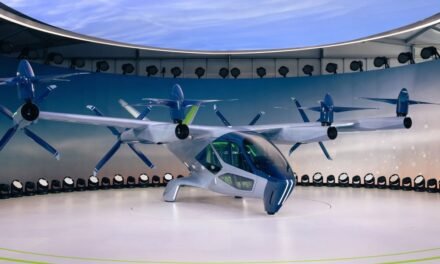Environmental concerns are significantly driving innovation in sustainable aircraft technologies, as the aviation industry works to reduce its environmental impact while meeting regulatory demands and consumer expectations. Here’s how these concerns are shaping advancements in aviation:
1. Reducing Greenhouse Gas Emissions
- Fuel-Efficient Engines:
- Development of advanced turbofan and open-rotor engines with higher bypass ratios, improving fuel efficiency and reducing CO₂ emissions.
- Example: Pratt & Whitney’s geared turbofan (GTF) engines.
- Sustainable Aviation Fuels (SAFs):
- SAFs are derived from renewable sources like algae, waste oils, and agricultural residues, emitting up to 80% less CO₂ compared to fossil fuels.
- Airlines and manufacturers are investing in SAF production and integration.
- Hydrogen Propulsion:
- Hydrogen-powered aircraft produce water vapor instead of CO₂. Research focuses on storage, distribution, and fuel cell integration.
- Example: Airbus ZEROe hydrogen concept aircraft.
2. Noise Pollution Reduction
- Quieter Engines:
- Modern engines incorporate acoustic linings, fan designs, and noise-dampening technologies to meet stringent airport noise regulations.
- Aerodynamic Enhancements:
- Wing and airframe designs reduce noise generated by turbulent airflow during takeoff and landing.
3. Electrification of Aviation
- Electric Propulsion Systems:
- Fully electric and hybrid-electric aircraft are being developed for short-haul and regional routes.
- Benefits include zero in-flight emissions, reduced noise, and lower operational costs.
- Example: Eviation’s Alice electric aircraft.
- Advanced Batteries:
- Innovations in battery energy density, such as solid-state batteries, are critical for scaling up electric aviation.
4. Lightweight Materials
- Composites and Alloys:
- Use of carbon fiber composites and lightweight alloys reduces aircraft weight, improving fuel efficiency and lowering emissions.
- Example: Boeing 787 and Airbus A350 incorporate high percentages of composites in their structures.
- Recyclable Materials:
- Research into biodegradable and recyclable materials minimizes environmental impact at the end of the aircraft’s lifecycle.
5. Improved Aerodynamics
- Wing Design Innovations:
- Concepts like blended wing bodies (BWB) and laminar flow control improve aerodynamic efficiency, reducing drag and fuel consumption.
- Example: NASA’s X-57 Maxwell explores distributed electric propulsion for optimized aerodynamics.
- Adaptive Surfaces:
- Smart materials and morphing wings adjust to flight conditions in real time, enhancing performance and reducing emissions.
6. Advanced Air Traffic Management
- Efficient Routing:
- AI and real-time data optimize flight paths, reducing unnecessary fuel burn and emissions.
- Continuous Descent Approaches (CDAs):
- Aircraft glide to land instead of descending in steps, reducing fuel usage and noise.
- Integration of UAVs and Urban Air Mobility (UAM):
- Electric vertical takeoff and landing (eVTOL) aircraft offer sustainable options for urban mobility, reducing congestion and emissions.
7. Renewable Energy for Airport Operations
- Solar-Powered Airports:
- Solar panels power airport operations, including terminals, ground vehicles, and charging stations for electric aircraft.
- Example: India’s Cochin International Airport operates entirely on solar energy.
- Electric Ground Support Equipment (GSE):
- Electrification of airport vehicles reduces local air pollution and carbon footprints.
8. Digital Twin and AI Technologies
- Predictive Maintenance:
- AI analyzes data to optimize maintenance schedules, improving efficiency and reducing resource consumption.
- Flight Optimization:
- Digital twins simulate and refine aircraft performance, ensuring minimal fuel use and emissions.
- Lifecycle Assessment:
- AI tools evaluate the environmental impact of aircraft from production to retirement, guiding sustainable manufacturing practices.
9. Circular Economy Practices
- End-of-Life Recycling:
- Aircraft parts and materials are being designed for disassembly and recycling, reducing landfill waste.
- Example: Programs like Airbus’ PAMELA (Process for Advanced Management of End-of-Life Aircraft).
- Waste Minimization:
- In-flight waste management systems sort and recycle materials, aligning with sustainability goals.
10. Regulatory and Market Incentives
- Global Carbon Standards:
- Initiatives like the International Civil Aviation Organization’s (ICAO) Carbon Offsetting and Reduction Scheme for International Aviation (CORSIA) encourage innovation to meet emission targets.
- Consumer Demand:
- Growing passenger preference for environmentally conscious airlines drives adoption of sustainable technologies.
Impact and Future Outlook
Environmental concerns have become a catalyst for groundbreaking innovations in aviation. While challenges such as scalability, cost, and infrastructure remain, ongoing advancements in materials science, propulsion, and operational strategies are paving the way for a more sustainable and environmentally friendly future in aviation.













